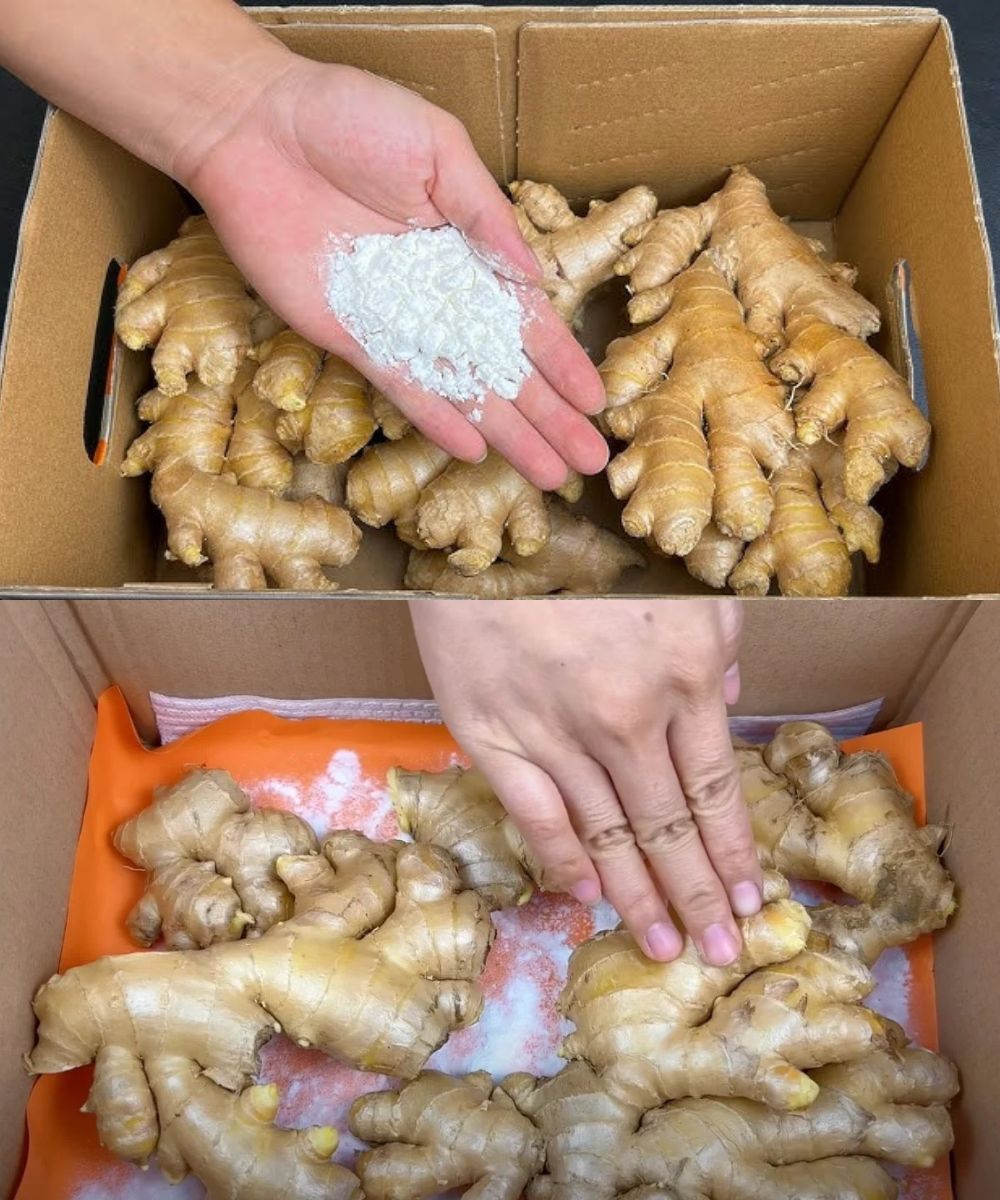Using this method allows you to maintain the ginger’s natural flavor and texture while avoiding the common problem of it drying out too quickly.
Method 2: Preservation with White Alcohol
This method involves disinfecting the ginger with white alcohol to prevent microbial growth. It is especially effective in warm or humid climates where spoilage happens more quickly.
How to Do It
First, wash the ginger thoroughly using a mixture of water and baking soda. A soft toothbrush can help remove any dirt from the surface.
Dry the ginger completely, either by air-drying it indoors or using a paper towel. Avoid drying it in direct sunlight, as this can cause shriveling.
Briefly soak the ginger pieces in food-grade white ethyl alcohol to disinfect them.
Wrap each piece of ginger tightly in plastic wrap and place them in an airtight glass or plastic jar.
📌Thank you for reading the article.
Extra Tips for This Method
Always use alcohol that is safe for food-related purposes. Label your storage jar with the date you prepared it so you can track freshness. When stored correctly, ginger preserved in this way can maintain its quality for many months without losing its aroma or potency.
This method not only protects the ginger from mold but also helps retain its firm texture, making it easy to slice or grate whenever needed.
Method 3: Freezing Ginger with Oil
Freezing ginger is a practical way to preserve it for a long time, and adding oil prevents freezer burn while making it easier to use later.
How to Do It
Peel and cut the ginger into small pieces or slices, depending on how you usually cook with it.
Mix the ginger pieces with a small amount of cooking oil, ensuring each piece is lightly coated.
Place the coated ginger into an airtight freezer-safe container or resealable bag, removing as much air as possible before sealing.
Extra Tips for This Method
You can use olive oil, sunflower oil, or another cooking oil that matches your culinary preferences. Keeping the ginger pieces small allows you to take out only the amount you need without thawing the entire batch. This method works particularly well if you often add ginger directly to stir-fries, soups, or marinades.
Frozen ginger retains much of its flavor and texture, and the oil makes it easy to drop straight into a hot pan without defrosting.
Choosing the Right Method for Your Needs
All three methods have their own advantages, so the best choice depends on your cooking habits, storage space, and climate. If you have a cool, dry pantry, the cardboard box and baking soda method is easy and low-maintenance.
For those in humid climates, preservation with alcohol offers extra protection against spoilage. Meanwhile, freezing with oil is perfect for anyone who wants ginger ready to cook at a moment’s notice without extra preparation.
Maintaining Hygiene for Long-Term Storage
No matter which method you choose, cleanliness is key. Always start with fresh, unspoiled ginger and clean your storage containers thoroughly before use. Moisture is the main enemy of long-term storage, so ensure the ginger is completely dry before storing it.
Periodically check your stored ginger for any signs of spoilage, such as mold spots, unusual odors, or soft, mushy areas. Removing affected pieces immediately can prevent spoilage from spreading to the rest of the batch.
Conclusion: Fresh Ginger All Year Round
With these three proven methods, you can keep ginger fresh for many months — even up to a full year — without sacrificing quality or flavor. By choosing the technique that fits your lifestyle, you can avoid waste and ensure you always have this essential ingredient at hand.
Proper storage not only saves you money but also makes your cooking easier and more flavorful. Whether you enjoy ginger in teas, soups, stir-fries, or baked goods, having a fresh supply ready whenever you need it can make all the difference in your kitchen.
